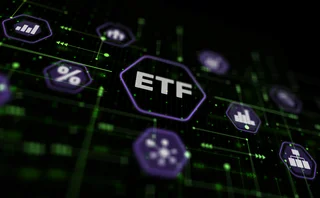Best Bets on Best Ex

Football is back, and while the news surrounding its first week has, to say the least, taken a different and darker course than the NFL would like, I figured I would start with related, brighter news: I won something: an office pool picking for or against the week one games spread, to be precise.
The funniest part about this, actually, is that I really didn't want to play this week—it was the first week of the season, when it's difficult to know anything about most of the league's teams, and I was feeling very uneducated. Basically, it's a crapshoot. But fortunately, I was compelled, and took the best shot I could with a little late research—and confidence that my Eagles would cover their preposterously high line of -10.5 (despite their every effort not to).
This leads me—naturally—to the matter of best execution, which most buy-side firms must feel similarly about. Like the casual bet on football, best execution mandates have been around for some time. Likewise, the idea of it has evolved as more complex asset classes have begun trading electronically and transparently, with more venues to route through—though also potentially more conflicts of interest among the intermediaries, dark pools, and venues all vying for flow.
What's Optimal?
There is little doubt, then, that optimal execution—beyond regulator-mandated "best" execution or your standard transaction cost analysis—is on the minds of the buy side, even if many of them would rather be focusing their energy on something else.
A great insight into the psychology behind it was highlighted by my colleague Anthony Malakian earlier this summer in his profile of behemoth State Street Global Advisors' (SSgA's) technology initiatives.
So is the best way to beat the spread to befriend the bookies in Vegas, or build a marvelous man cave for yourself and study endless game footage?
And this week, on the same day in fact, two firms—Tabb Group and KOR Group—introduced the industry to a pair of best execution analysis services.
Of course, this tells us there is a demand to better understand how firms' trades are being executed, even if unlike SSgA, many of them don't want to build that capability on their own and would rather outsource it instead. But more interesting is how the two services seem different.
Tabb was very clear about where it's focusing its Clarity service: on the trade data files, pulling as many of them in as possible for its investment firm clients, which it says currently number more than half a dozen. KOR, meanwhile, seems to be taking a more tailored direction and has also included an emphasis on brokerage commissions and fees—an issue close to its founders' hearts, with captive order flow and related fees being underscored as buy-side issues in the aftermath of Michael Lewis' Flash Boys.
The first model, in other words, thinks close work with the sell side is the only way forward; the second thinks the buy side is tired of losing money in slippage and fees, and is more suspicious of its intermediaries. Quite a contrast.
So, is the best way to beat the spread to befriend the bookies in Vegas, or build a marvelous "man cave" for oneself and study endless game footage despite them?
Context
Neither approach is necessarily wrong; instead I would expect the Best Ex services that can capture context most subtlely will prove most successful.
Indeed, having the data about market activity at any given time, about the order queues and who got jumped and how, essentially about what happened, is crucial. Then again, also crucial is the why: What was the order's purpose? What kind of strategy, e.g. active, passive, smart beta or otherwise, was it generated for in the first place?
That's where optimality would seem to distinguish itself from barebones transaction cost analysis (TCA), in being able to measure execution quality precisely, and then parsing out what's coincidence or unimportant from what matters.
After all, looking at the Eagles' score from last Sunday superificially, it turned out precisely like most people thought it would: as an easy win. But how it happened—on a turnover for a touchdown on one of the game's final, and from a statistical standpoint, likely most meaningless, plays—did not.
One can be glad about the outcome, and temporarily enjoy how it looks on paper.
But knowing the way it transpired is more important for next week.
Only users who have a paid subscription or are part of a corporate subscription are able to print or copy content.
To access these options, along with all other subscription benefits, please contact info@waterstechnology.com or view our subscription options here: http://subscriptions.waterstechnology.com/subscribe
You are currently unable to print this content. Please contact info@waterstechnology.com to find out more.
You are currently unable to copy this content. Please contact info@waterstechnology.com to find out more.
Copyright Infopro Digital Limited. All rights reserved.
You may share this content using our article tools. Printing this content is for the sole use of the Authorised User (named subscriber), as outlined in our terms and conditions - https://www.infopro-insight.com/terms-conditions/insight-subscriptions/
If you would like to purchase additional rights please email info@waterstechnology.com
Copyright Infopro Digital Limited. All rights reserved.
You may share this content using our article tools. Copying this content is for the sole use of the Authorised User (named subscriber), as outlined in our terms and conditions - https://www.infopro-insight.com/terms-conditions/insight-subscriptions/
If you would like to purchase additional rights please email info@waterstechnology.com
More on Trading Tech
This Week: BBH, AllianceBernstein add data solutions, Deutsche Börse-Nodal Exchange, and more
A summary of some of the latest financial technology news.
Consortium backs BGC’s effort to challenge CME
Banks and market makers—including BofA, Citi, Goldman, Jump and Tower—will have a 26% stake in FMX.
Symphony boosts Cloud9 voice offerings with AI
The messaging and collaboration platform builds on Cloud9’s capabilities as it embraces the AI wave in what CEO Brad Levy calls “incremental” steps.
Can exchanges leverage new tech to claw back ETF share from RFQ platforms?
Systematic trading strategies and proliferating data are bringing efficiency to an otherwise-fragmented European ETF market.
Nasdaq reshuffles tech divisions post-Adenza
Adenza is now fully integrated into the exchange operator’s ecosystem, bringing opportunities for new business and a fresh perspective on how fintech fits into its strategy.
Liquidnet sees electronic future for gray bond trading
TP Icap’s gray market bond trading unit has more than doubled transactions in the first quarter of 2024.
This Week: HKEx's new derivatives platform; GoldenSource; Quonian-SimCorp, and more
A summary of some of the latest financial technology news.
Chris Edmonds takes the reins at ICE Fixed Income and Data Services
Edmonds is now leading ICE’s fixed income and data business as the rush to provide better data and analytics in fixed income builds.
Most read
- Chris Edmonds takes the reins at ICE Fixed Income and Data Services
- Deutsche Börse democratizes data with Marketplace offering
- Nasdaq reshuffles tech divisions post-Adenza







